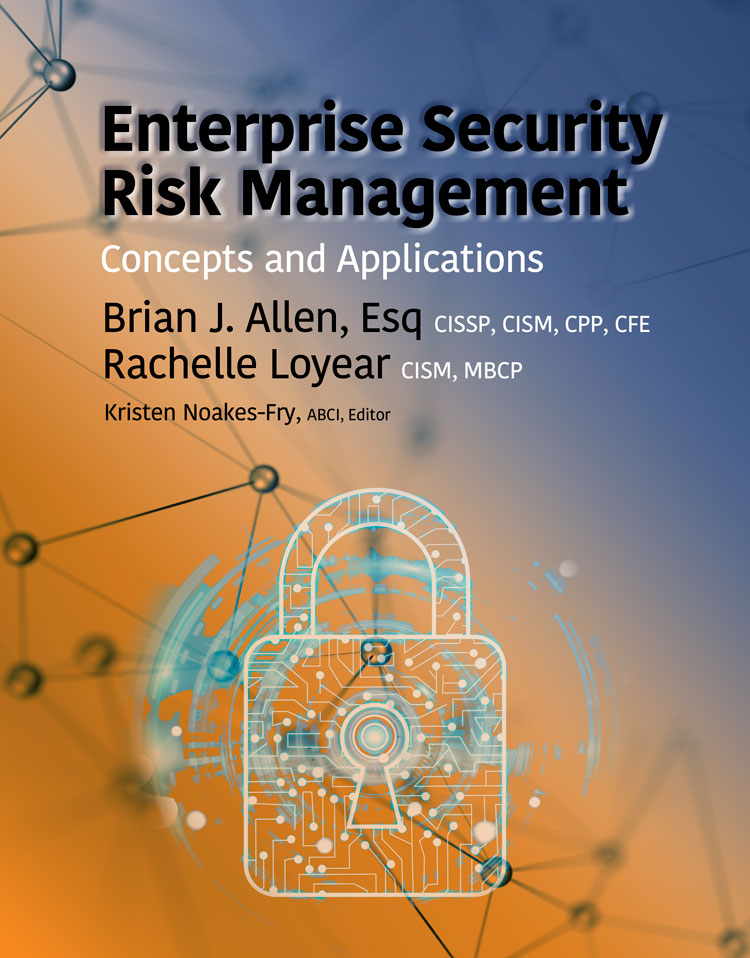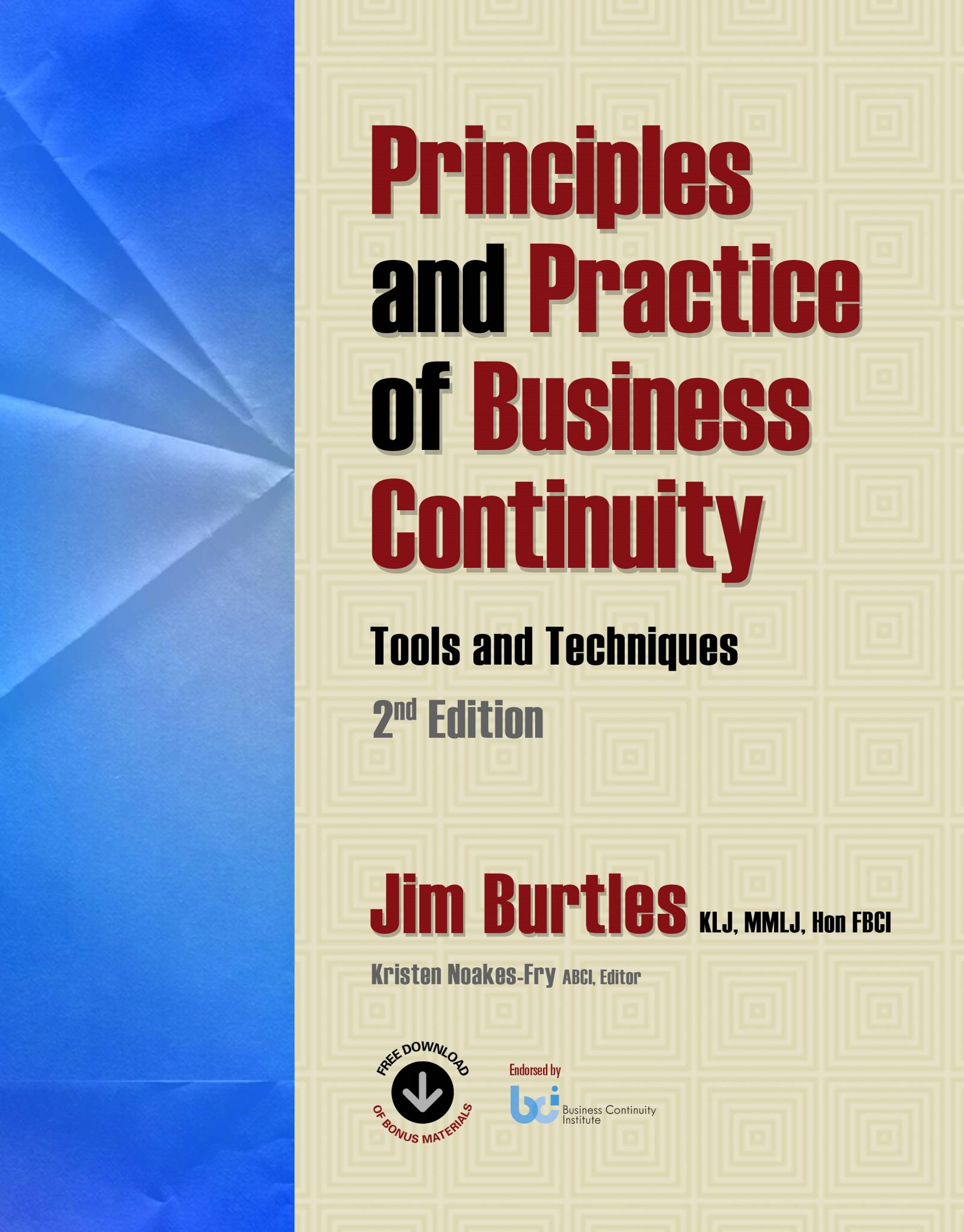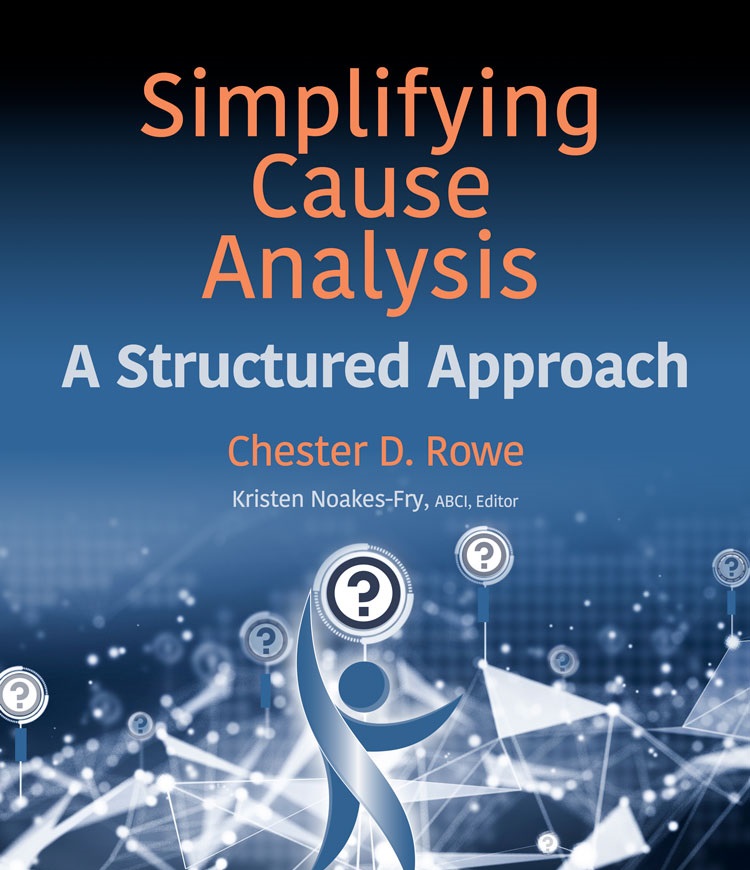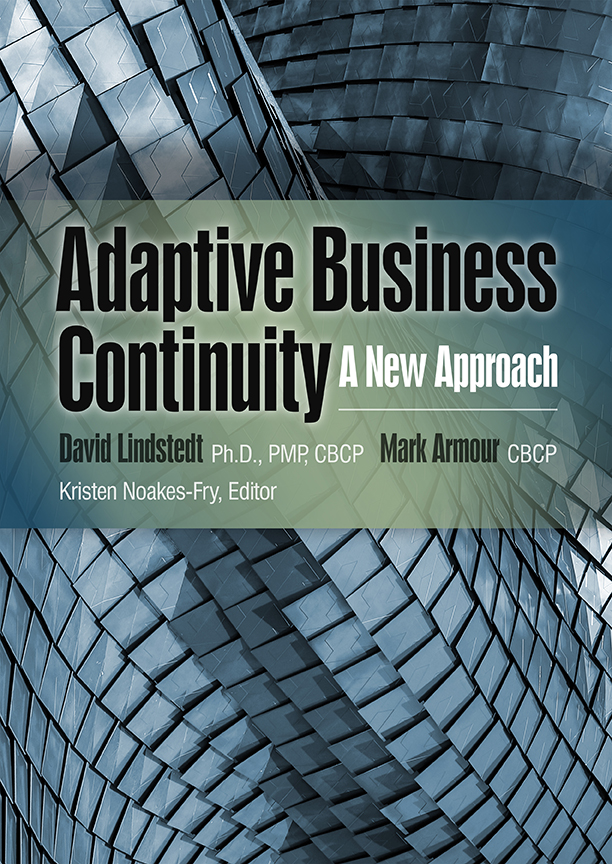


How Can Enterprise Security Risk Management (ESRM) Help Your Security Program?
Find out now with your FREE Chapter!
You will further:- Explore how security has traditionally been viewed both inside and outside of the security profession.
- Understand how Enterprise Security Risk Management can change the perception of security in your business organization to help you better communicate the value of security risk management.
- See how ESRM is your best methodology to meet the changing global security risk climate.
Business Continuity Awareness Week (BCAW) 2019 on May 13th – 17th will focus on the theme “Investing in Resilience” which will be the same theme for this year’s BCI World 2019.
This year’s theme for Business Continuity Awareness Week will explore different interpretations of “investing” to generate discussions around how we can best support business continuity professionals and resilience functions. From investing in people and training, to looking ahead and considering how we can invest in the future of resilience, this year’s BCAW activities seek to empower our community through raising awareness of the profession.
Get your free chapter on Governance in the Resilient Organization from the book Principles and Practice of Business Continuity Tools and Techniques, by Jim Burtles.
In the first 15 chapters of Jim Burtles' book, you learn how and why you might approach the development and delivery of a successful and effective business continuity (BC) program. This process has involved exploring the tools, techniques, and products. By now, you should be in a position to practice this discipline in a professional manner, and this book has focused on the detail level at which BC is expected to operate and prove to be beneficial. Now, in this chapter on governance in the resilient organization, it is intended for both the experienced BC practitioner and a person entering the profession, you have a chance to look upwards and outwards to see where BC fits within your organization’s hierarchy and how it might filter upwards and penetrate downwards, as BC is integrated into your corporate culture.


Self-Inflicted Leadership Crisis Response Failure Behaviors
1. Surprise: Stems from the U.S. management culture developed over the last 40 years which stresses the invincibility of managers and leaders based on extensive monitoring and data collection to the exclusion of many traditional (historic?) management beliefs, actions, concerns and functions. Today’s prevailing attitude is that smart managers are unlikely to suffer a crisis.
The unintended consequence of this delusion is that much necessary readiness activity never takes place.
Part of the surprise crisis always brings is related to the almost immediate realization by these smart leaders that readiness has suffered in an environment of management omnipotence and over optimism about inherent response capabilities.
The lesson: The smarter they are the harder and faster they fall.
The outcome is: The refusal to believe that things are serious, i.e. not wanting to look too concerned in the eyes and gossip of peers.

|
Six Drivers and Ten Principles: An Introduction to Adaptive Business Continuity Adaptive Business Continuity (Adaptive BC) is an approach to continuously improve an organization’s recovery capabilities, with a focus on the continued delivery of services following an unexpected unavailability of people, locations, and/or resources. Adaptive BC transforms or eliminates the majority of traditional activities in the continuity planning industry. As a result of this focus on proven practices it can help practitioners stray away from outdated and ineffectual “best” practices. Join author, speaker, and unconventional business continuity thought-leader David Lindstedt as he presents Six Drivers and Ten Principles: An Introduction to Adaptive BC, an in-depth discussion that explores the ways in which Adaptive BC better equips continuity practitioners by enhancing their ability to limit potential damage to organizations’ brand, capital, functions, and revenue following an incident or disaster. Continuity Insights will be hosting this complementary webinar on Thursday, January 17, 2019 at 2:00 p.m. ET. Register here to learn more about this critical topic: Adaptive Business Continuity's Newest approachThrough a wealth of examples, diagrams, and real-world case studies, Lindstedt and Armour show you the most important steps on how to execute an Adaptive Business Continuity. The book further outlines a framework for you to include in your own organization. For instance, you will:
Altogether this framework will help your business improve and demonstrate a more effective continuity plan. |

